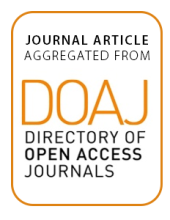Land Library Search
Through our robust search engine, you can search for any item of the over 73,000 highly curated resources in the Land Library.
If you would like to find an overview of what is possible, feel free to peruse the Search Guide.
/ library resources
Showing items 1 through 9 of 86.This paper proposes that, different though they are, the processes of urban development in China and the UK can be analytically compared by looking at the commonly occurring opposition and resistance to that development.
The urbanization of watersheds is a highly dynamic global phenomenon that must be monitored.
Given the regional geographic specificities of Central Andean valleys, the social and environmental impact of dispersed urbanization on smallholder farmers is particularly high in the new urban peripheries of Peruvian mountain cities.
Hollow-bearing trees provide habitat for diverse taxonomic groups and as such they are recognised for their importance globally. There is, however scant reference to this resource relative within urban forest patches.
Greenbelts are the best-known growth management policies in Germany. As part of its regional plans, they attempt to keep undeveloped areas permanently open, thus avoiding sprawling, i.e., land consumptive forms of urban development.
Land use change models are powerful tools that allow planners and policy makers to assess the long-term spatial and environmental impacts of their decisions. In order for these models to produce a realistic output, they should be properly calibrated.
The past two decades saw rapid and massive urbanization and industrialization in China. Despite much research has been reportedly done at local and regional scales, little has been reported on the trajectories, patterns, and drivers of these two intertwining processes at the national level.
Urbanization is a global phenomenon with still unknown consequences for vegetation dynamics of urban ecosystems, especially in subtropical areas of developing countries.
Effectively identifying soil properties in relation to non-point source (NPS) phosphorus pollution is important for NPS pollution management. Previous studies have focused on particulate P loads in relation to agricultural non-point source pollution.


